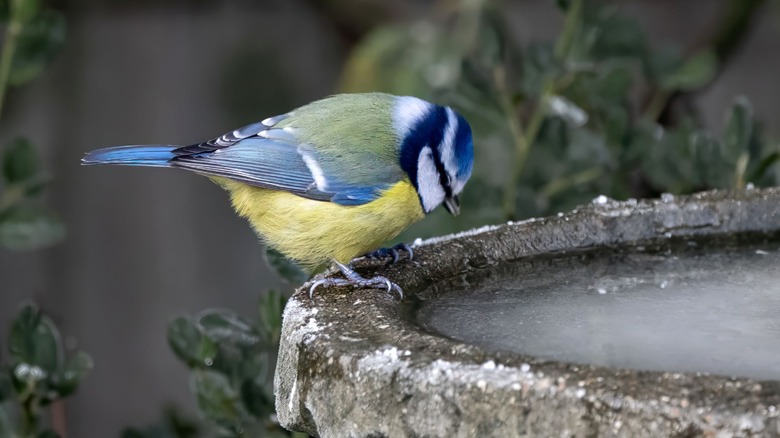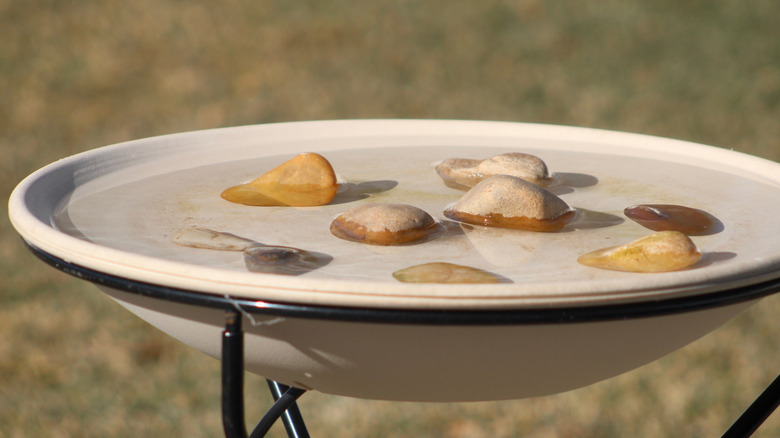The Easy Water Trick That Can Help Keep Your Bird Bath From Freezing This Winter
Bird baths are crucial throughout the year but especially in the winter, when food and water sources grow scarce. The rivers, ponds, and lakes that provide birds with water during other times of year may periodically freeze over. They can drink from snow, but the effort drains the calories they desperately need, and the birds may already expend more energy to find food, flying longer distances for sustenance. Adding in the time to melt the snow with their body heat to make it drinkable could quickly leave them exhausted. A well-placed and water-filled bird bath provides a crucial point of relief, but one problem that happens in the winter is they often freeze over, meaning your flock can't get the necessary hydration. An easy water trick to try to keep the bird bath from freezing over is regularly adding warm water. This will help keep the bath at a temperature where it won't freeze and your birds can safely grab a drink.
Installing heated bird baths for freezing winters is another effective solution to keep your bath available, yet they're often expensive. Plus, you just might not want to upgrade your current one. The warm water method is quick and easy, but if you have a frozen bird bath, you might mistakenly think you can simply pour hot or boiling water on the ice to melt it and call it a day. Unfortunately, this method may shatter the material. If your bird bath is made from concrete, glass, ceramic, or any other material prone to cracking from thermal shock, the sudden temperature change could cause instant damage. Keeping it at a warm temperature for winterizing your bird bath goes a long way towards keeping the water ready and accessible for your feathered friends.
Cold weather tips to keep your bird bath water from freezing
You only need to run your hot water tap and collect the warm water in a bowl to thaw your bird bath. Add the water slowly to your bird bath to keep it melted. Remember that water freezes once it reaches 32 degrees Fahrenheit, so when the temperatures plummet, keep an eye on the condition of the bath. It's likely you may have to pour in warm water several times a day. You can make a habit of checking on your bird bath each time you eat a meal or need to step outside. Be sure that you don't overflow the bath, keeping the water level at 2 inches maximum in the middle. But don't let it dwindle too much, as shallow amounts of water will freeze more readily.
You can help lessen the chances the water freezes by choosing a smart place to put your bird bath. Try moving it to a sunny yet sheltered spot in your yard. While you're at it, float a small ball in the basin, as the wind will propel it around to keep the water moving and break up any small bits of forming ice. If you don't have any already, add stones and sticks to the basin to give the birds a sturdy perch, which might help them avoid getting their feathers wet when it's freezing outside. Never use chemical de-icers or salt in the bath, as these can make birds sick. In addition to keeping your bird bath filled with warm water, stock your feeder with high-quality high-fat favorites like sunflower seed and suet cakes to keep your chirpy friends around and happy throughout the season.

